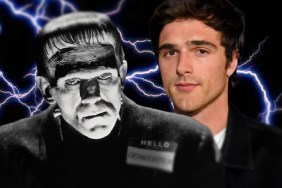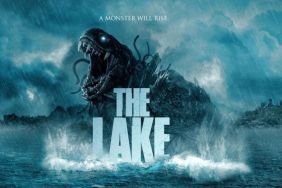A look back at the wonderful British horror anthology film The Monster Club
I don’t know many people who love director Roy Ward Baker’s bizarre, scary and charming 1981 horror anthology The Monster Club. I’m not sure why. Perhaps its because when the film came out, the sort of thrills it was peddling were old hat. After The Exorcist, The Texas Chain Saw Massacre, Halloween, Dawn of the Dead and Friday the 13th, younger horror fans wanted no part of their father’s horror movies and actors like Vincent Price and John Carradine just didn’t speak to their hunger for violence, sex and more visceral and nihilistic entertainments. Because of that, The Monster Club was a box office dud and critics weren’t kind. But, like with most out-of-step horror pictures, time has been good to The Monster Club and a viewing today is almost certain to rock your world. Of this I swear…
The Monster Club was produced by British mogul Milton Subotsky, one half of the team behind England’s Amicus Productions, the scrappier answer to Hammer Films that specialized in all-star anthology shockers, films like Dr. Terror’s House of Horrors, Tales from the Crypt and its sequel The Vault of Horror and Asylum. And while The Monster Club is technically not an Amicus movie, it feels like one. Baker of course helmed both Asylum and The Vault of Horror and the three stories the film adapts were penned by noted genre author R. Chetwynd-Hayes, who wrote Amicus’ From Beyond the Grave. And of course, there’s a wealth of British talent in front of the lens, including Amicus regulars Donald Pleasence and Patrick Magee. The big difference here is that The Monster Club, in its wraparound segments, tries very hard to be contemporary, shoehorning in British pop music and disco and weird musical numbers that must have seemed tacky and out of touch in 1981. But today they’re all kinds of awesome…
Carradine plays a character named R. Chetwynd-Hayes who, like his namesake, is a famous author of horror novels and who is attacked one evening by an ancient vampire named Eramus (Price). Eramus takes only a taste of the scribes blood — he is after all, his number one fan — and, as a mea culpa, takes him to his local haunt, the after-hours, monster only hotspot of the title. There, while all manner of weird New Wave and rock music blares in background and goofily dressed extras shake their supernatural asses, Eramus schools the author on the various kinds of monsters, pure and crossbred, that exist on the fringes of the planet. Helpfully, he even has a handy flowchart. Have a look:
After this amusing and intentionally silly bit of wonderful hokum, Eramus introduces the first tale, that of “The Shadmock.” In it, a couple of grifters (Simon Ward and Barbara Kellerman) plot their next hustle, with Kellerman answering the call to be a housekeeper at a looming manor owned by a gentle recluse (James Laurenson). Initially repulsed by the man (he looks like a pasty riff on legendary horror host Zacherle, who in turn looked like Lon Chaney in Phantom of the Opera), she sticks around in hopes of ripping the poor fiend off. Problem is, the gent is actually a Shadmock, a monster who can kill and maim by whistling (shades of the 1978 movie The Shout). After Kellerman agrees to marry the man, he throws a party in her honor and invites his eerily masked relatives. And then things get scary. This is a fine, disturbing tragedy and Laurenson sells it with his sympathetic portrayal and the final scene is rather disturbing. As a kid, years before I saw the film, I had a comic book reprinting some John Bolton drawn comic adaptions from this film and others and The Shadmock was in there. It scared the hell out of me then and the film itself is almost as jittery.
Next up is “The Vampires,” a goofy but atmospheric and delightful tale about a vampire patriarch (Zombie‘s Richard Johnson) and his loving wife (the gorgeous Brit Eklund) and their poor little boy, who is bullied daily. The kid is befriended by a kindly vicar (Pleasence, clearly having a blast) who offers to walk the lad home. Thing is, Pleasence is actually the head of a secret cabal of vampire killers assigned to murder the boy’s undead pop. Once they break into the basement crypt to do just that, much silliness ensues. But unlike some of the camp in Baker’s The Vault of Horror, this segment is long, eccentric and beautifully-produced with some great Eastern European-tinted music and a warm, sweet final sting. Not scary, but a total delight.
The final story, “The Ghouls,” is not only the scariest tale of the lot, it’s one of the creepiest damned things I’ve seen in any British horror movie and I would love to see just this story get a feature remake. In it, Stuart Whitman plays a hot-sh*t American director who ventures into the British countryside to scout locations and winds up in a ruined abbey, where he meets the always spooky looking Patrick Magee. Magee is the leader of a group of ashen, leering creeps dressed in filthy robes and with murder on their minds. They overtake Whitman and imprison him in a locked room where he is brought food by Magee’s daughter. She informs the terrified filmmaker that she is a “humgoo,” born of human and ghoul and that her “family” are a species of ghouls that invaded the village, mated with the women and ate the men and then proceeded to eat the dead. In a nightmarish animated sequence, we see this gruesome history unspool, with the girl explaining that they get their wood and food from the “boxes” in the ground and now… there’s no more boxes in the ground. I won’t say more about this story but honestly, it’s one of the most unsettling little slices of shock to seep out of the Amicus cannon.
There’s so much to adore about The Monster Club. Baker was often a restrained director who always seemed a bit too “classy” for some of Hammer’s more lurid material (The Vampire Lovers and The Legend of the Seven Golden Vampires, for example) but he really goes for it here, having fun with the giddy framing material and really letting loose with the stories themselves. He’s aided by a superlative cast, handsome production values, great Chetwynd-Hayes source material (though apparently the author wasn’t very pleased with the film) and an amazing musical score by Amicus regular Douglas Gamley with John Williams (not THAT John Williams) on acoustic guitar (the same John Williams also played the haunting “Cavatina” piece from The Deer Hunter). Said score is lovely when in symphonic mode and horrifying when it veers into pure electronic evil, as in “The Ghouls” story.
Released by various entities in all formats all over the world for years, The Monster Club is a very easy film to find and deserves to command a much bigger cult following. Have you seen it? Do you love it too? Tell us your thoughts in the comments section below…
Monster Club
-
Monster Club #1

-
Monster Club #2

-
Monster Club #3

-
Monster Club #4

-
Monster Club #5

-
Monster Club #6

-
Monster Club #7











